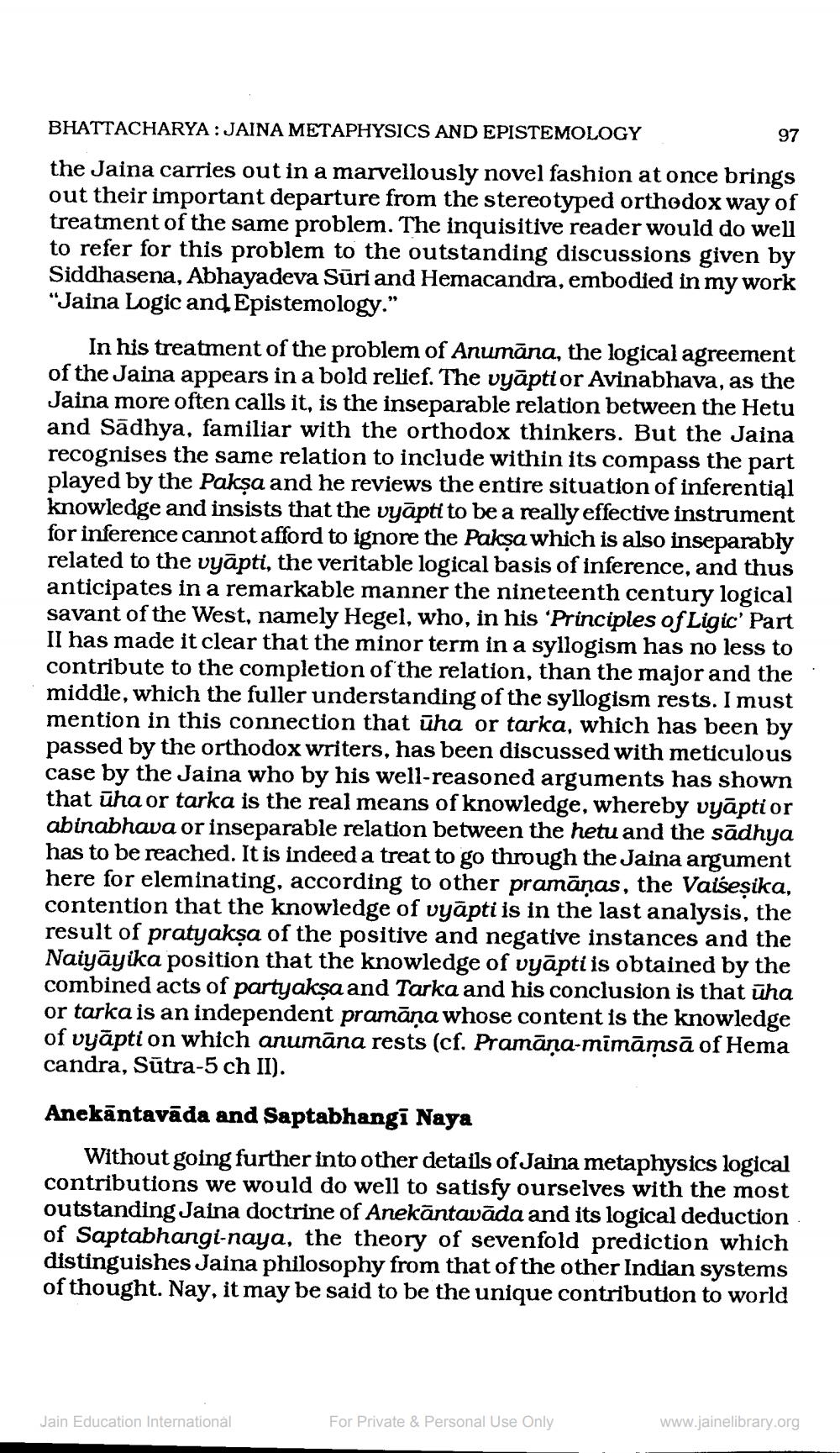________________
BHATTACHARYA: JAINA METAPHYSICS AND EPISTEMOLOGY
the Jaina carries out in a marvellously novel fashion at once brings out their important departure from the stereotyped orthodox way of treatment of the same problem. The inquisitive reader would do well to refer for this problem to the outstanding discussions given by Siddhasena, Abhayadeva Suri and Hemacandra, embodied in my work "Jaina Logic and Epistemology."
In his treatment of the problem of Anumana, the logical agreement of the Jaina appears in a bold relief. The vyāpti or Avinabhava, as the Jaina more often calls it, is the inseparable relation between the Hetu and Sadhya, familiar with the orthodox thinkers. But the Jaina recognises the same relation to include within its compass the part played by the Pakṣa and he reviews the entire situation of inferential knowledge and insists that the vyapti to be a really effective instrument for inference cannot afford to ignore the Pakṣa which is also inseparably related to the vyapti, the veritable logical basis of inference, and thus anticipates in a remarkable manner the nineteenth century logical savant of the West, namely Hegel, who, in his 'Principles of Ligic' Part II has made it clear that the minor term in a syllogism has no less to contribute to the completion of the relation, than the major and the middle, which the fuller understanding of the syllogism rests. I must mention in this connection that uha or tarka, which has been by passed by the orthodox writers, has been discussed with meticulous case by the Jaina who by his well-reasoned arguments has shown that uha or tarka is the real means of knowledge, whereby vyāpti or abinabhava or inseparable relation between the hetu and the sadhya has to be reached. It is indeed a treat to go through the Jaina argument here for eleminating, according to other pramāņas, the Vaiseṣika, contention that the knowledge of vyapti is in the last analysis, the result of pratyakṣa of the positive and negative instances and the Naiyāyika position that the knowledge of vyāpti is obtained by the combined acts of partyakṣa and Tarka and his conclusion is that ūha or tarka is an independent pramāņa whose content is the knowledge of vyapti on which anumāna rests (cf. Pramāṇa-mīmāmsā of Hema candra, Sūtra-5 ch II).
97
Anekāntavāda and Saptabhangi Naya
Without going further into other details of Jaina metaphysics logical contributions we would do well to satisfy ourselves with the most outstanding Jaina doctrine of Anekāntavāda and its logical deduction of Saptabhangi-naya, the theory of sevenfold prediction which distinguishes Jaina philosophy from that of the other Indian systems of thought. Nay, it may be said to be the unique contribution to world
Jain Education International
For Private & Personal Use Only
www.jainelibrary.org




